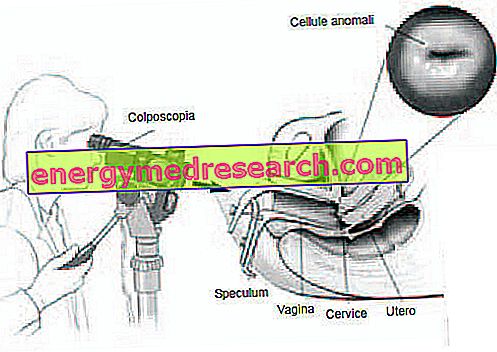Generalized anxiety disorder (DAG)
It has a prevalence of about 5% and in more than 2/3 of the cases it is associated with another psychiatric illness, such as panic disorder, phobias or depression. Onset is more common in young adults, around 20 years.
It is characterized by excessive anxiety and concern about several situations or activities, such as work or school performance. They are associated with at least 3 neurovegetative symptoms such as restlessness, tension, irritability, difficulty concentrating, memory lapses, easy fatigability, sleep disorders. These manifestations cause significant discomfort and must last at least 6 months for the diagnosis of DAG to be made.
The trend is basically chronic, and its evolution towards panic disorder or depression is common.
The therapy is psychic and pharmacological with anxiolytics and / or antidepressants.
Anxiety disorder due to a medical condition
This is a framework in which anxiety symptoms are the direct consequence of a non-psychiatric illness. These symptoms can take the form of a panic attack, generalized anxiety, obsessions or compulsions. There are many diseases that can cause anxiety from a medical condition:
- neurological: epilepsy, migraine, brain tumors, encephalitis, multiple sclerosis, Parkinson's disease;
- cardiovascular: arrhythmias, heart failure, pulmonary embolism;
- respiratory: pneumonia, asthma, emphysema, chronic bronchitis, hyperventilation syndromes;
- of metabolism : vitamin B12 deficiency, pellagra;
- endocrine system : hypo or hyperthyroidism, hypercorticosurenalism, pheochromocytoma;
- systemic diseases : tumors, autoimmune diseases, infections of various types.
The symptoms present are such as to produce a significant discomfort or to compromise the subject's life.
The treatment consists in removing, when possible, the underlying disease associated with the use of psychotherapy and drug therapy.
Substance-induced anxiety disorder
It is similar to the previous one, but the anxiety in this case is the consequence of a drug that is abused, of a drug or of exposure to a toxin. Symptoms may occur either as a result of intoxication or withdrawal. Symptoms include generalized anxiety, panic attacks, obsessive or compulsive manifestations, phobias.
The compounds that most frequently cause a similar disorder are:
- substances : alcohol, amphetamines, cannabis, cocaine, hallucinogens (ecstasy, LSD), opiates, various inhalants;
- drugs : sedatives, hypnotics, anxiolytics, antidepressants, anesthetics, analgesics, NSAIDs, cardiovascular drugs (antihypertensives, digitalis), steroids, thyroid drugs, bronchodilators, estrogens.
The symptoms generally disappear with the suspension of the substance. If this does not happen, the possibility that an irreversible lesion due to the substance in question has occurred should be considered.
Even in this condition, however, recourse to psychological and pharmacological interventions is useful.
Anxiety disorder not otherwise specified
This group includes those significant anxiety or phobic avoidance disorders that fall outside the criteria of any specific anxiety disorder previously treated.
An example is that of the mixed anxiety-depressive disorder, characterized by an unpleasant psychic condition with sadness, anxiety and irritability (dysphoric mood), which lasts for at least a month, associated with difficulty concentrating, sense of "empty head", alterations of sleep, feeling of fatigue or low energy, hypervigilance, worry, crying, a tendency to negative forecasts for the future, despair, low self-esteem or feelings of contempt for oneself. The association of these symptoms with gastrointestinal disorders is also quite common.
The therapy is based on the use of anxiolytics and antidepressants, without neglecting psychotherapy.



